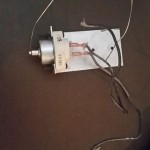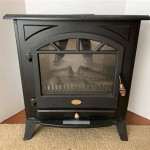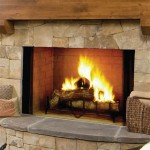Fireplace Gas Valve Replacement Parts: A Comprehensive Guide
The gas valve is a critical component of any gas fireplace, responsible for controlling the flow of gas to the burner. When a gas valve malfunctions, it can lead to a variety of problems, including the fireplace not turning on, inconsistent flame height, or gas leaks. Replacing the faulty gas valve with the correct replacement parts is essential for restoring safe and reliable operation. This article offers a comprehensive guide to understanding fireplace gas valves and the replacement parts necessary for their proper functioning.
A gas fireplace relies on several interrelated components to function correctly. The pilot assembly, thermocouple or thermopile, gas valve, burner, and ignition system all work in concert. The gas valve acts as the central control point, regulating the flow of gas for both the pilot light and the main burner. Understanding the function of each of these components is essential for diagnosing gas valve issues and selecting the appropriate replacement parts.
Because gas appliances involve inherent safety risks, it is strongly recommended that only qualified technicians with appropriate certifications perform gas valve replacements. Improper installation or incorrect parts selection can lead to hazardous conditions, including gas leaks and potential explosions. This article is for informational purposes only and should not be considered a substitute for professional advice and service.
Understanding Common Gas Valve Problems
Identifying the symptoms of a faulty gas valve is the first step in the repair process. Several common issues indicate a potential problem with the gas valve, demanding investigation and potential replacement. One of the most frequent symptoms is the inability to light the pilot light or the main burner. If the ignition system is functioning correctly, but the pilot light refuses to ignite or stay lit, the gas valve might be the culprit. This can be due to internal obstructions, a malfunctioning solenoid, or a faulty regulator within the valve.
Another common issue is a fluctuating or weak pilot flame. A healthy pilot flame should be steady and engulf the thermocouple or thermopile. If the flame is small, yellow, or constantly flickering, it may not be generating enough electricity to keep the gas valve open. This can be caused by a partially blocked pilot orifice within the gas valve or issues with the gas pressure regulation.
Inconsistent flame height or complete failure of the main burner to ignite are also indicators of a gas valve problem. The gas valve is responsible for delivering the correct amount of gas to the burner to maintain a consistent flame. If the flame is too high, too low, or fails to ignite altogether, the gas valve may be malfunctioning. This could be due to a faulty regulator or internal components that are not opening or closing properly.
Finally, any indication of a gas leak near the valve requires immediate attention. A gas leak is a serious safety hazard and should be addressed immediately by a qualified technician. Gas leaks can be caused by cracked valve bodies, loose fittings, or damaged seals within the valve. If a gas leak is suspected, the gas supply to the fireplace should be shut off immediately, and a professional should be contacted.
Identifying Key Replacement Parts
Gas valves are often complex assemblies with multiple components, and understanding these components is critical when seeking replacement parts. While some gas valves may be repairable by replacing individual parts, it is often safer and more reliable to replace the entire valve assembly, especially if the unit is old or heavily corroded.
The following list describes common replacement parts associated with gas valves:
*Thermocouple/Thermopile:
These are safety devices that generate a small electrical current when heated by the pilot flame. This current keeps the gas valve open, allowing gas to flow to the pilot and main burner. A faulty thermocouple or thermopile will prevent the gas valve from staying open, causing the pilot light to extinguish shortly after being lit. *Pilot Orifice:
This small opening regulates the amount of gas that flows to the pilot light. A clogged or damaged pilot orifice can cause a weak or unstable pilot flame. Cleaning or replacing the pilot orifice may restore proper pilot function. *Solenoid Valve:
This electrically operated valve controls the flow of gas to the main burner. When the thermostat calls for heat, the solenoid valve opens, allowing gas to flow to the burner. A faulty solenoid valve can prevent the main burner from igniting or cause it to ignite erratically. *Gas Pressure Regulator:
This component maintains a constant gas pressure to the burner. A malfunctioning regulator can cause fluctuating flame heights or prevent the gas valve from operating correctly. Replacing the regulator ensures consistent gas flow and proper burner performance. *Valve Body:
This is the main housing of the gas valve, containing all the internal components. If the valve body is cracked or damaged, it must be replaced to prevent gas leaks. Valve bodies are usually specific to the gas valve model. *Knobs and Controls:
These are the external controls used to adjust the gas flow and turn the fireplace on and off. Damaged or broken knobs and controls can make it difficult to operate the fireplace safely and effectively. *Conversion Kits:
These kits allow a gas valve to be converted from natural gas to propane or vice versa. Conversion kits typically include new orifices, regulators, and other components specific to the type of gas being used.It is important to note that the specific replacement parts needed will depend on the make and model of the gas valve. Always consult the manufacturer's specifications and parts list to ensure compatibility. Using the wrong replacement parts can lead to safety hazards and improper fireplace operation.
Proper Identification and Sourcing of Replacement Parts
Correctly identifying the specific gas valve and its corresponding replacement parts is crucial for a successful repair. Several pieces of information are necessary when sourcing replacement parts. The make and model number of the fireplace are the primary identifiers. This information is usually found on a data plate attached to the fireplace unit, often located inside the control panel or near the burner assembly.
In addition to the fireplace make and model number, the gas valve itself will often have a separate model number stamped or printed on its body. This number is essential for identifying compatible replacement parts. If the gas valve model number is not readily visible, consult the fireplace manufacturer's documentation or contact a qualified technician for assistance.
Once the necessary information has been gathered, replacement parts can be sourced from various suppliers. Authorized fireplace dealers are a reliable source for genuine replacement parts. These dealers typically have access to the manufacturer's parts catalog and can ensure that the correct parts are ordered. Online retailers specializing in fireplace parts are another option. However, it is important to verify the retailer's reputation and the authenticity of the parts before making a purchase. Purchasing from unreliable sources can result in receiving counterfeit or incompatible parts, which can compromise the safety and performance of the fireplace.
Before ordering any replacement parts, double-check the compatibility with the specific gas valve model. Compare the part number and specifications with the manufacturer's recommendations to ensure a proper fit and function. If unsure, consult with a qualified technician or the parts supplier to verify compatibility. Avoid using generic or universal replacement parts unless specifically recommended by the manufacturer. Generic parts may not meet the required safety standards or perform as expected.
When receiving the replacement parts, carefully inspect them for any damage or defects. Ensure that all the necessary components are included and that they match the specifications listed in the parts list. If any discrepancies are found, contact the supplier immediately for assistance.
Replacement parts should be stored in a safe and dry place until they are ready to be installed. Keep them away from extreme temperatures, moisture, and direct sunlight. Proper storage will help prevent damage and ensure that the parts are in good condition when they are needed.
Finally, it bears repeating that professional installation by a qualified technician is highly recommended for gas valve replacement. A technician will have the necessary tools, knowledge, and experience to install the replacement parts safely and correctly. Attempting to replace the gas valve without proper training can lead to safety hazards and improper fireplace operation.

Gas Valve Kits Fireplace Kit Complete

Gas Valve Replacement Part With Quick Disconnect Plug For Kitchen Appliances China Pipe Line Stove Appliance Made In Com

Replacing A Gas Ball Valve To Your Fireplace

Gas Valve Replacement Part With Quick Disconnect Plug For Kitchen Appliances China Pipe Line Stove Appliance Made In Com

Gas Valve Replacement Part With Quick Disconnect Plug For Kitchen Appliances China Pipe Line Stove Appliance Made In Com

Dante Globe Gas Valve Key And Floor Plate Kit Straight Polished Brass Finish

Sit 0820636 Lp Gas Valve Vent Free Lennox Majestic Ubuy

Gas Valve Replacement Part With Quick Disconnect Plug For Kitchen Appliances China Pipe Line Stove Appliance Made In Com

Replacing Your Gas Valve Preparing For Winter Fireplace Doors

Pro Flex Hearth Master Valve Kit Straight Brushed Nickel Finish Key And In The Gas Fireplace Log Accessories Department At Com
Related Posts








